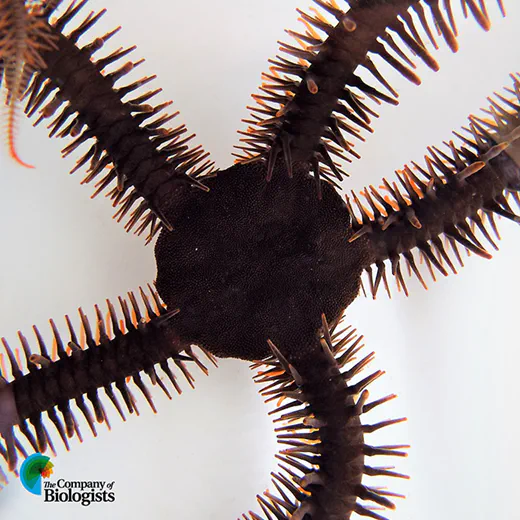Run and Hide: Visual Performance in a Brittle Star
Jun 8, 2021·,,,·
0 min read
Lauren Sumner-Rooney
John D. Kirwan
Carsten Lüter
Esther Ullrich-Lüter

Abstract
Spatial vision was recently reported in a brittle star, Ophiomastix wendtii, which lacks discrete eyes, but little is known about its visual ecology. Our aim was to better characterize the vision and visual ecology of this unusual visual system. We tested animals’ orientation relative to vertical bar stimuli at a range of angular widths and contrast, to identify limits of angular and contrast detection. We also presented dynamic shadow stimuli, either looming towards or passing overhead the animal, to test for potential defensive responses. Finally, we presented animals lacking a single arm with a vertical bar stimulus known to elicit a response in intact animals. We found that O. wendtii orients to large ($≥$50° ), high-contrast vertical bar stimuli, consistent with a shelter-seeking role and with photoreceptor acceptance angles estimated from morphology. We calculate poor optical sensitivity for individual photoreceptors, and predict dramatic oversampling for photoreceptor arrays. We also report responses to dark stimuli moving against a bright background - this is the first report of responses to moving stimuli in brittle stars and suggests additional defensive uses for vision in echinoderms. Finally, we found that animals missing a single arm orient worse to static stimuli, which requires further investigation.
Type
Publication
Journal of Experimental Biology